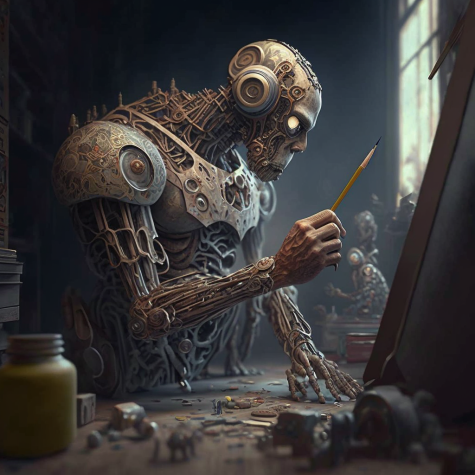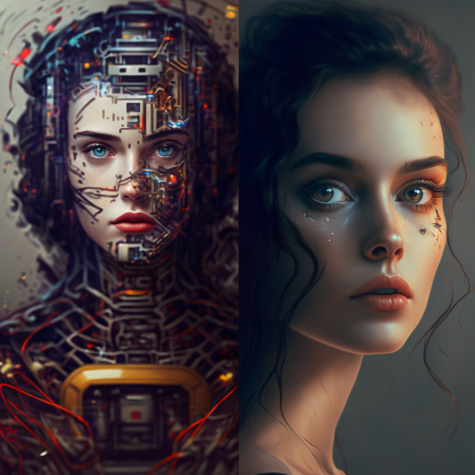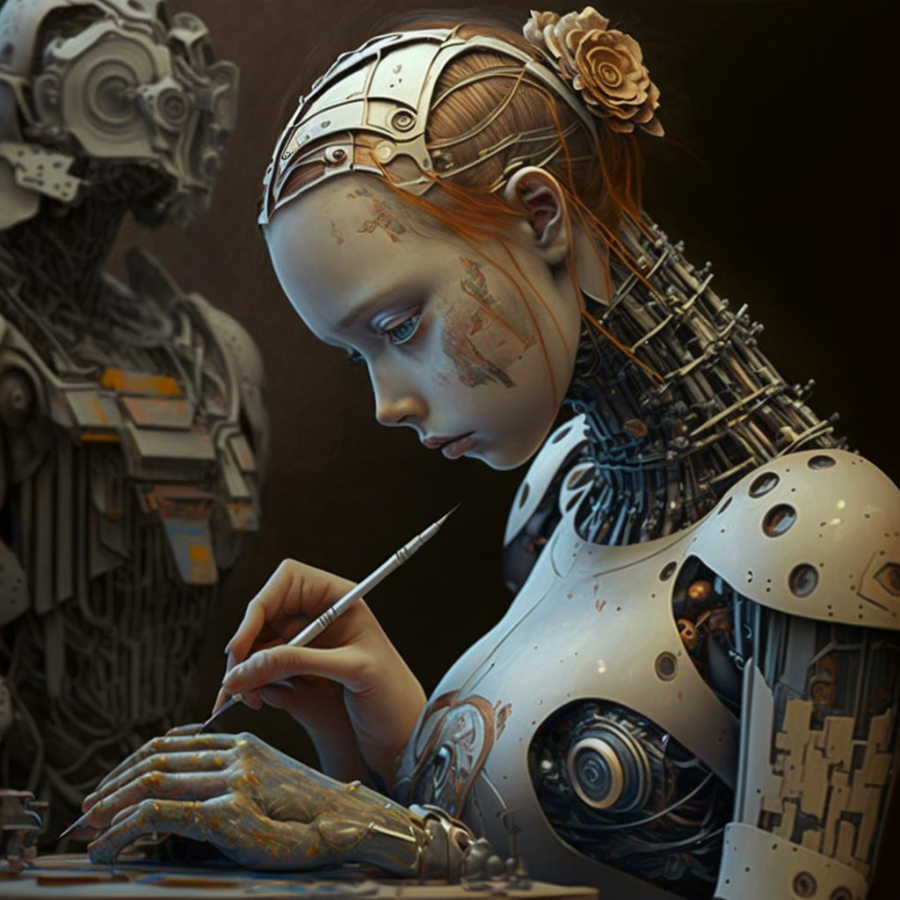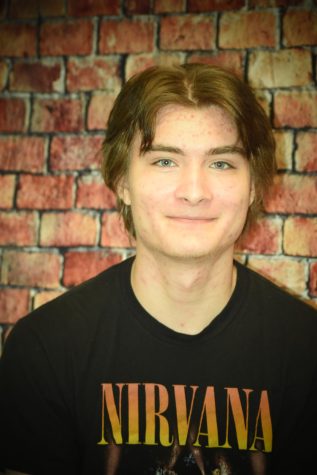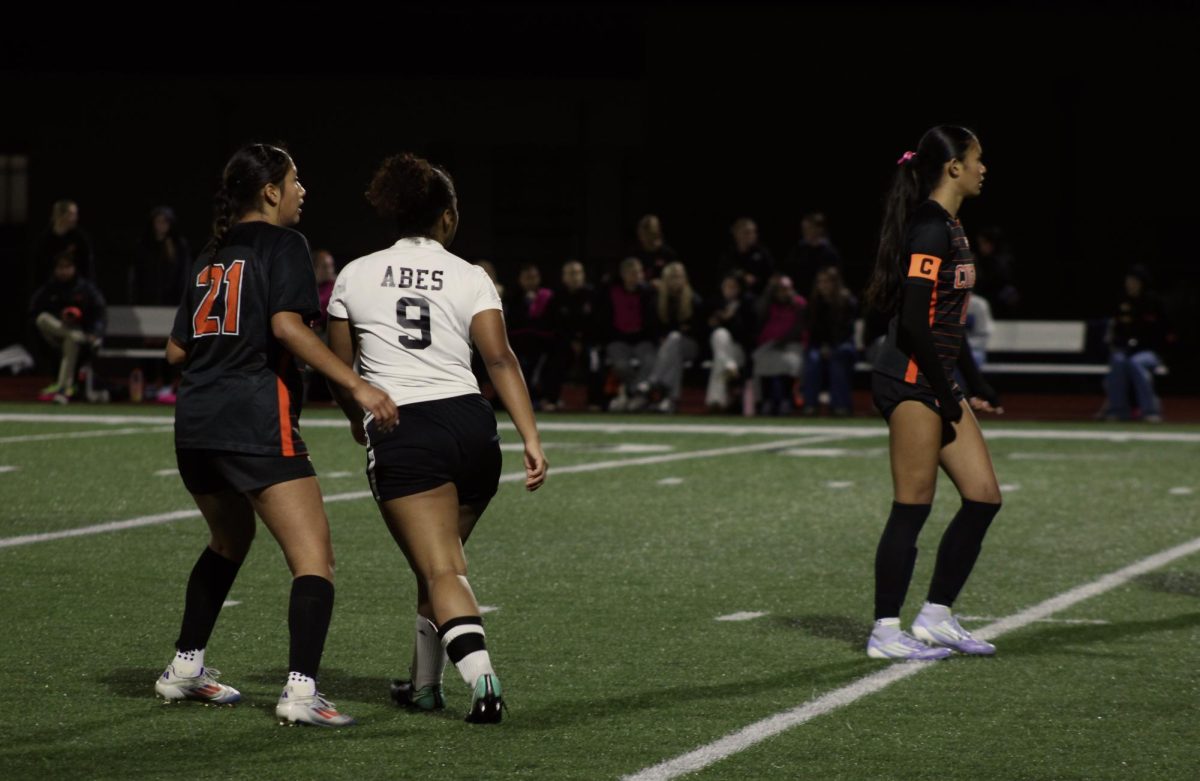CKHS Students’ Thoughts and Opinions on AI Art
Artificial intelligence art swarmed the internet as 2022 was coming to an end, providing a way for non artists to create aesthetically pleasing art work without having to do anything more than type a prompt.
AI art softwares such as MidJourney AI and Dall-E 2 allow users to type a series of text that the AI will turn into an art piece by pulling images from their dataset (collection of digitally stored images on a cloud). The AI art softwares save new images from the internet to their dataset automatically once a user enters a new prompt, the images that are used in the creation of AI art and the ones that get saved to the dataset are oftenly copyrighted images created by real artists. If you want more information on AI art click here.
Human artists all over the world have heard about AI art and been able to form opinions about it. Central Kitsap High School student artists have presented their opinions and the general consensus is negative towards the way AI art is created.
“I’m mainly against it, I do understand some uses of it, but it has to be done a specific way,” said Rosa Wade. “Like you can’t just steal other people’s stuff, feed it to an AI and be like, okay, now I’m gonna feed back what I stole from you.”
Due to the fact that most AI generated art pieces are created largely with the use of copyrighted images, many artists are upset about the commercialization of the AI art softwares due to this technically violating the fair use doctrine.
AI art software weaves around any copyright claims by having the pretext “research” because the use of copyrighted material is permitted under the categories of criticism, comment, news reporting, teaching, scholarship, and research
“[I feel like the policies are crap] they’re just ways to avoid getting sued, they’re just avoiding lawsuits,” said Wade. “They know that what they’re doing is wrong and they really don’t care.”
Copyright law allows the owner of the copyrighted property to sue for monetary damages and possibly statutory damages for unauthorized/non consensual use of copyrighted material.
“[If my art] was used without the maturity and without permission of the art piece, I would feel a little bit bad because I made it and some credit should be given for artists whose work is put into the system and put into other peoples art by the AI,” Said Sarah Dowel. “That doesn’t make me feel very good.”
Dowel states that it doesn’t make her feel good that AI software doesn’t give credit to the artists which the AI is taking art pieces from, however she does believe that if AI becomes advanced enough it could be potentially beneficial.
“I do think AI can be beneficial for designing buildings if they can figure out how to make AI technology be able to design, maybe replace the job of an architect,” said Dowel.
Though Sarah believes that AI art can potentially be beneficial in a professional environment, she does believe that legislation should be made by the United States Copyright Office to prevent the ability to sell AI created art.
“[The United States Copyright Office should] create legislation and maybe add into the fact that you cannot sell AI created art, I feel like it’s one thing making it you know, it’s cool to make one but for any artists who think that selling it is a good idea, it is ick,” said Dowel.
Most artists are strictly against AI art due to the fact that it stores and uses copyrighted images without permission. However, CKHS art teacher Dawn Adams had a more unbiased opinion on the matter of AI art, comparing it to how artists draw inspiration from other artists to create an art piece that is their own.
“If you have 10 different artists works copyrighted artists work that have been influenced a single piece that’s been created, at some point that’s only 10% of that art being reflected, I think at that some point, it’s something new,” said Adams.
Adams stated that at some point only 10% of another artists art piece is being reflected and at some point it is something new, however she still believes that the companies behind the AI art softwares are responsible for compensating the artists whose art they are using.
“[I think it’s] the same thing like we can listen to Spotify, we can listen to all this music but it’s up to them to make sure that the artists have been compensated for us to be able to listen to music. It’s like pirating art,” said Adams.
The CKHS art students are not fond of AI art and the unethical ways it is created, however, it does not seem likely that the United States Copyright Office will step in and update any policies nor will the fair use doctrine to aid artists in this conflict.
